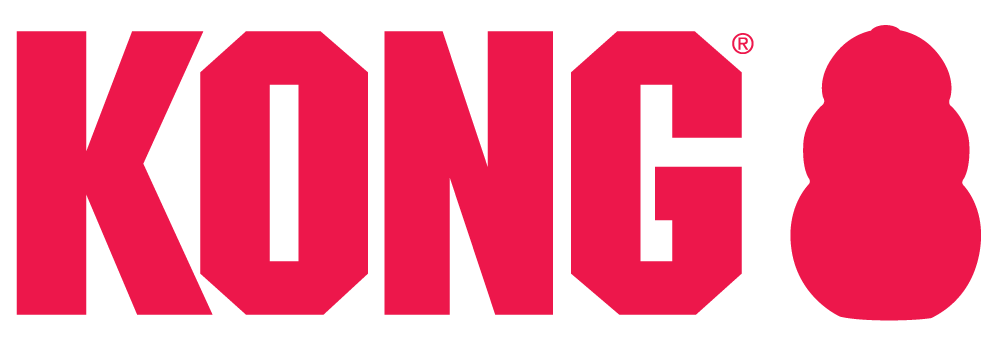KONG Air Quality Assessment
Overview
The KONG dog toy factory, located in Golden, CO, tasked the Golden Retrievers with identifying the sources of odor and haze on the factory floor and developing a solution to create a more comfortable work environment. Using slightly different formulas, toys of varying color, size, shape and durability are created. The process that the factory uses to produce rubber dog toys releases fumes as the molded parts are removed from the molding machines and cool down. The toys off-gas both visible and invisible fumes during the cycle and curing process, which is important to maintain to preserve the integrity of the finished product. In addition, factory workers manually trim and count the finished toys. Air quality testing performed by an independent laboratory concluded that there were no health or safety concerns associated with the levels of fumes present at KONG, so workplace comfort for the machine operators is the main focus of the project.
The challenge of this project was to find the major source(s) of the odor and fumes. While visible off-gassing occurs in large quantities when the freshly molded toys are released from the machines, toys that are cooling down sit in intermediate bins and large storage bins located at every workstation. These parts continue to off-gas for hours after they are formed while they are still warm. By testing the levels of volatile organic compounds (VOCs) at numerous locations, the major source was found to be these intermediate holding bins that sit open to the ambient air and contain parts that are still hot. Our project summarizes our findings during testing and includes a few recommendations for better capture of the fumes in the factory.
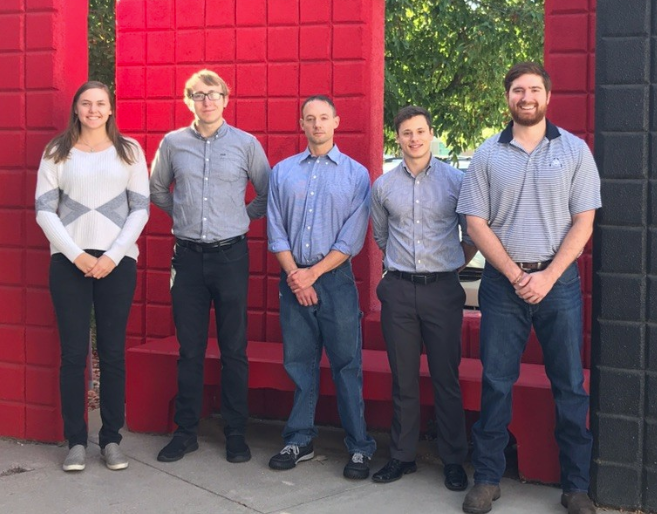
Team Members
- Owen Kyte
- Johanna Boyer
- Michael Vessa
- Charlie Perkins
- Jordan Work
The Client
- KONG
Acknowledgements
Upon the completion of this project, the team would like to sincerely thank numerous individuals and groups for their support, because without them, this project would not have been possible.
We would like to thank:
Our client, Craig Jack and the rest of the KONG team.
Our project advisor, Lisa Woodward.
Our technical advisors, Alina Handorean, Timothy Sweitzer, Erin Sedlacko, John Spear and Jorgen Brun.
Video
Elevator Pitch
The KONG company is well known for producing high quality rubber dog toys at their factory in Golden, CO. Our team was tasked with performing an assessment of the air quality within the factory in order to reduce the odor that results from the production of the rubber KONG toys. While an outside company has performed tests showing that there were no health concerns relating to the factory air, the existing air handling system still results in a strong smelling factory floor.
Our assessment focused on identifying the source of the odors so that solutions could be implemented in order to reduce it in the future. The KONG company had already invested in an additional air handling system for part of the factory, but has not had significant results. The company is looking to invest $125,000 in improving existing systems and implementing new systems in order to reduce the odor in the factory.
The first form of testing performed was with an air flow monitor. Air flow readings were performed in order to determine a more optimum filter change regime, in order to maximize airflow throughout the work week. The team was able to conclude that the air filters used had their effectiveness reduced by around 15% over a span of 24 hours and should therefore be replaced daily.
The team also spent significant time monitoring volatile organic compounds (VOCs) inside the factory. VOC monitoring was performed in order to determine where the sources of the odor were. Before testing was performed, there was speculation that the majority of the odor resulted from the off-gassing that occured as the molds were first opened, where fumes were visible to the naked eye. However, testing showed that these visible fumes were not the primary source of VOCs, but instead that the primary sources were the intermediate bins where hot toys were stored and in the large gaylord where large quantities of warm toys were kept.
Our assessment and potential solutions for reducing odor inside of the KONG dog toy factory are detailed below.
Design Approach
After initial observations, we wanted to better capture the visible fumes and contain the toys while they were hot. Our initial designs were focused on containing the fumes and funneling them into the existing ventilation system. We proposed intermediate bins that could be placed under the snorkel and surrounded by plexiglass panels to prevent the fumes from being blown around the factory. We also designed intermediate bins that had a small opening to insert finished parts with a vacuum hose to vent all fumes into the ventilation system. To capture steam and gas coming from the initial release from the molds, we proposed modifying the ducting over the back of the machine. A flow meter was used to test the abilities of the ventilation system to capture air from the factory. The circular openings of the snorkel and vent over the back of the machines have sufficient flow, but are the incorrect shape for optimum fume capture.
The ventilation system itself was also identified as a potential issue. The flow meter was used to measure the drop in air flow as the pre filters become dirty over time. Bag filters and carbon adsorption filters within the system are a possible source of concern as well since they have not been changed since their installation over a year ago. The decision was made to test the factory air for VOCs and particulate matter to identify the main sources of odor. Addressing the areas of the factory that produce the majority of the fumes will contribute the most to increased comfort for the factory workers. In order to accomplish our goal, the team conducted VOC testing at several locations in the factory at varying times throughout normal workdays and over the weekend when the machines were not in use. The results of these tests drove some of our design iterations. We focused more on the cooling parts and those left open to the ambient factory air than on the fumes released during mold opening.
The client needs drove the design iterations to the final design. It was imperative that the solution was not an obstruction to the workers and that it would not change their workflow or process. The client also expressed that there should be no interference with the molding or the cooling process. There was a budget of $125,000 to fully implement the team’s solution if it was found to be satisfactory and necessary. For our final solutions, we focused on containing the fumes released by the toys in the intermediate bins and gaylords.
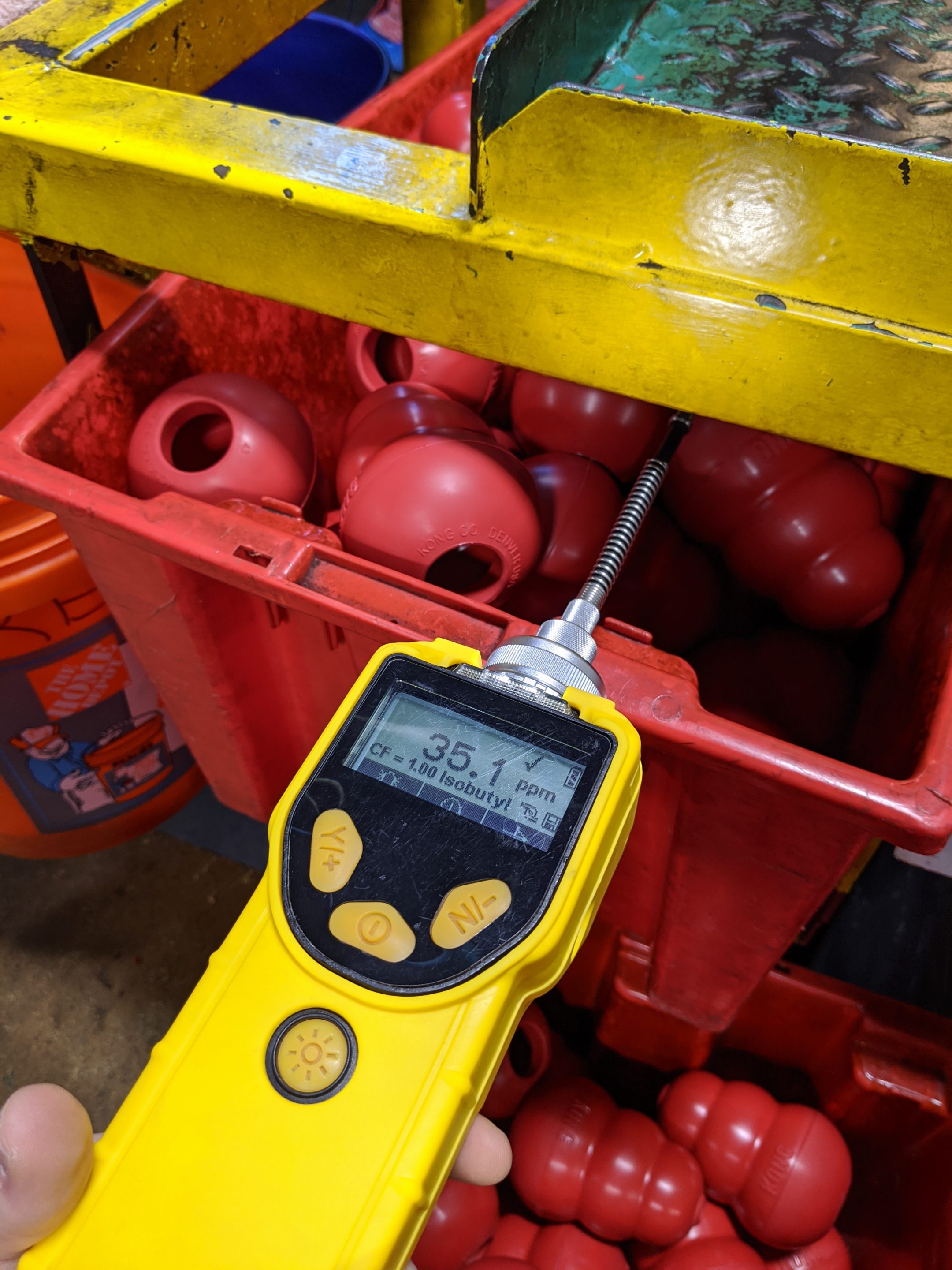
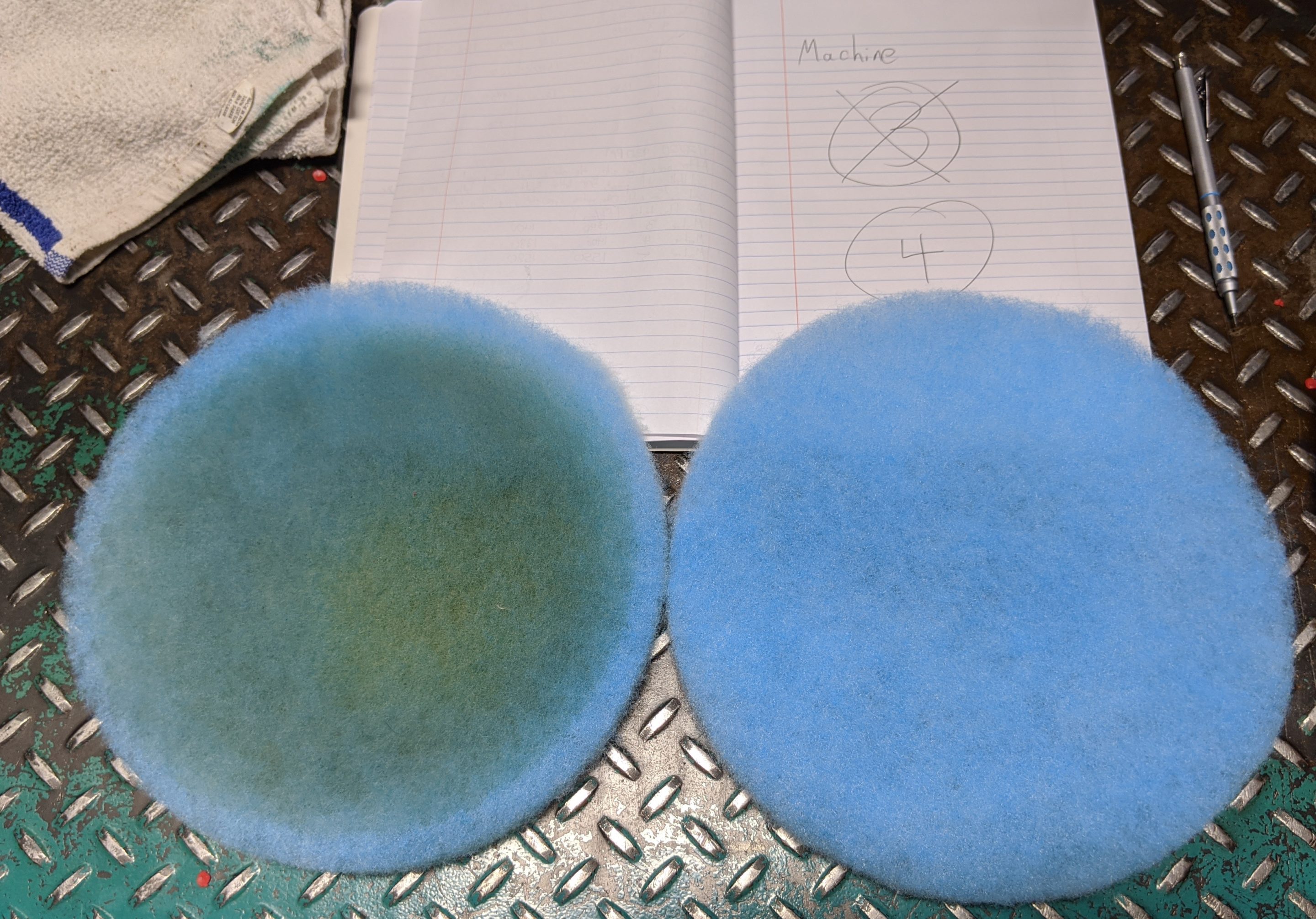
Design Solution
The team’s recommended design solution is to implement the use of bins and gaylords with lids that can seal most of the fumes inside. To do this, the intermediate bins would be replaced entirely with clear plastic bins that have a latchable opening. In the top of the box would be a small grommet that allows for single toys to be inserted, while also helping to keep the box relatively sealed. The solution for the gaylords would not require a new container, but instead an attachable lid would just be added. This lid would be very similar to that of the bin previously mentioned, but would be entirely detachable for unobstructed access to the entire gaylord contents. This lid could be attached by either a magnet system or a slide lock. By implementing these new container options, it would keep most of the fumes released by the toys inside the container. Although there would be significant release of the fumes when opened, as well as steady leaking of small amounts, the solution would be much more effective than the current process.

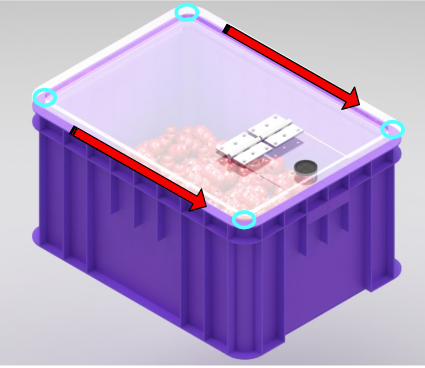
Next Steps
With the unfortunate early termination of our testing, there were some elements of testing that the team was unable to perform. The team was unable to perform any particulate testing inside of the factory, and performing testing with a particulate monitor similar to the testing done with the VOC monitor could lead to valuable insight about the exact source of odor and air pollution within the factory. Even without the particulate testing, the results from the VOC testing indicated where the odor sources were. Observations of the air flow and ventilation systems in the factory also revealed areas that could be improved. To improve the air quality, various solutions could be implemented and a modification of the current workflow used in the factory should be considered. Different hood shapes and configurations should be added to the existing system that collects air through the snorkels and ducts above the back of the machines to more effectively capture fumes. The cooling toys that contribute significantly to the odor in the factory should be contained and the fumes released from them should be captured and treated. The pre filters and filters should be changed more often and with more regularity and the bag and carbon filters should be changed according to the installers recommendations. A log verifying the time and date of each filter change is important for the continuous improvement of this system. In the future, the process by which the operators trim, count, and cool the toys could be streamlined and the toys could be kept away from the area where the operators breathe.
Meet the Team
Owen Kyte
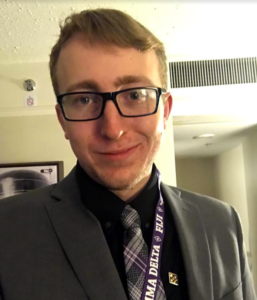 Owen will be graduating with his Bachelor of Science degree in Mechanical Engineering in May of 2020. He has enjoyed the past 4 years studying at Mines and is a proud member of the fraternity of Phi Gamma Delta on campus. Owen plans to stay living in Colorado after graduation and looks forward to utilizing his education.
Owen will be graduating with his Bachelor of Science degree in Mechanical Engineering in May of 2020. He has enjoyed the past 4 years studying at Mines and is a proud member of the fraternity of Phi Gamma Delta on campus. Owen plans to stay living in Colorado after graduation and looks forward to utilizing his education.
After working on this project for the past year, Owen hopes that the work performed by his team will help pave the way for the KONG company to better address the air quality within the factory.
Michael Vessa
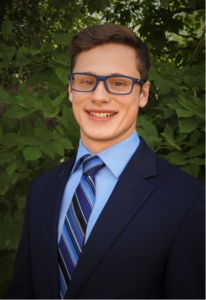 Michael is enrolled in the 5 year BS+MS combined program for Mechanical Engineering and will finish up his masters degree in December. He spent his senior year working part time on a Navy owned ballistics model for Applied Research Associates in Littleton, where he plans to continue working for the foreseeable future.
Michael is enrolled in the 5 year BS+MS combined program for Mechanical Engineering and will finish up his masters degree in December. He spent his senior year working part time on a Navy owned ballistics model for Applied Research Associates in Littleton, where he plans to continue working for the foreseeable future.
Charlie Perkins
Charlie is an Environmental Engineering major graduating in May 2020. Charlie hopes to be working in a hydrological setting after graduation and looks forward to working outdoors within the water field in some fashion. He plans to stay in Colorado for the immediate future and to work close to family and friends are in the works.. After working on the KONG project, Charlie hopes solutions offered will be implemented at the factory.
is an Environmental Engineering major graduating in May 2020. Charlie hopes to be working in a hydrological setting after graduation and looks forward to working outdoors within the water field in some fashion. He plans to stay in Colorado for the immediate future and to work close to family and friends are in the works.. After working on the KONG project, Charlie hopes solutions offered will be implemented at the factory.
Johanna Boyer
 Johanna is graduating with her Bachelor of Science in Environmental Engineering in May 2020. She played volleyball before transferring to Mines, and has spent the last two years as a math tutor for younger children. She would like to work in the renewable and sustainable energy field and to someday return to school for a higher degree. She hopes that KONG continues to work on the project and improve the air quality inside the factory.
Johanna is graduating with her Bachelor of Science in Environmental Engineering in May 2020. She played volleyball before transferring to Mines, and has spent the last two years as a math tutor for younger children. She would like to work in the renewable and sustainable energy field and to someday return to school for a higher degree. She hopes that KONG continues to work on the project and improve the air quality inside the factory.
Jordan Work
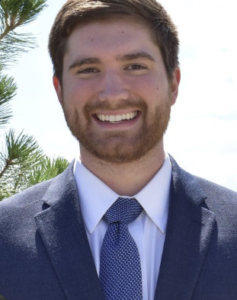 Jordan Work is a senior studying Mechanical Engineering. After graduation, he will be moving back home to Texas. Jordan is glad to have had the opportunity to work on this project for the past year.
Jordan Work is a senior studying Mechanical Engineering. After graduation, he will be moving back home to Texas. Jordan is glad to have had the opportunity to work on this project for the past year.
